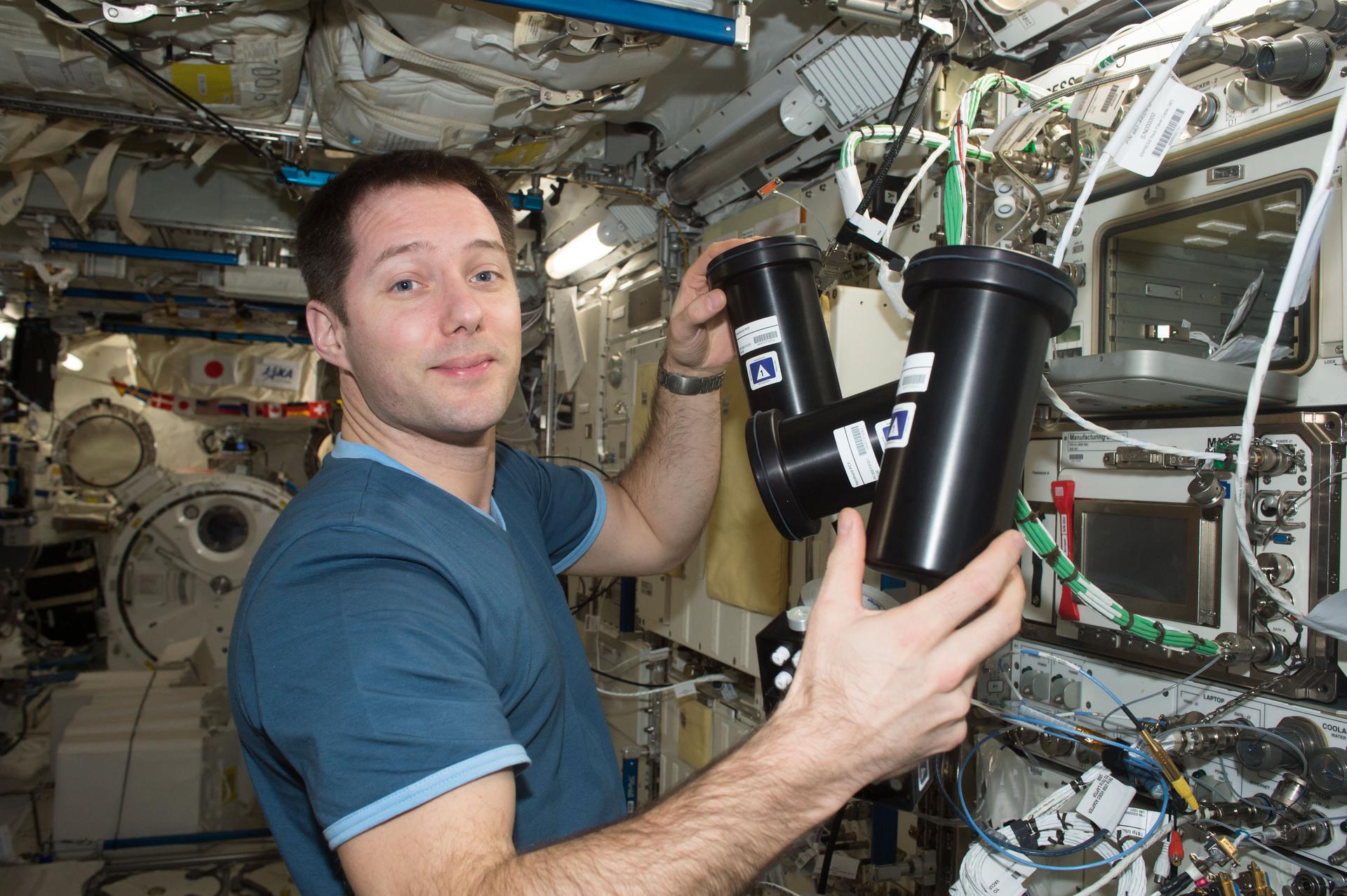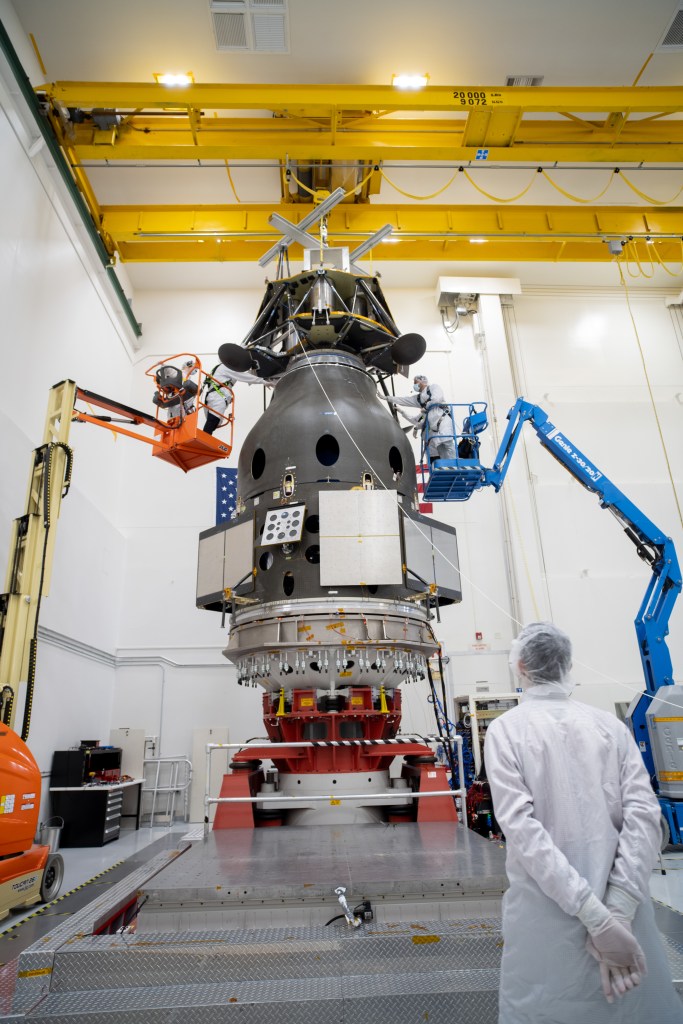In January 1972, President Richard M. Nixon directed NASA to build the space shuttle, a revolutionary and partially reusable space transportation system designed to lower the cost of sending hardware and people to low Earth orbit.
In January 1972, President Richard M. Nixon directed NASA to build the space shuttle, a revolutionary and partially reusable space transportation system designed to lower the cost of sending hardware and people to low Earth orbit. The main components of the system included a winged reusable orbiter, two reusable side mounted booster rockets, and a large central external tank, the only expendable major element. In August 1973, NASA selected Martin Marietta to build the external tank for the space shuttle. The first contract called for the contractor to design, test, and deliver to NASA the first six External Tanks (ETs) as well as three ground-based test articles. Subsequent contracts covered delivery of 136 ETs during the life of the shuttle program, including significant weight reduction measures to increase the overall system’s payload capacity.
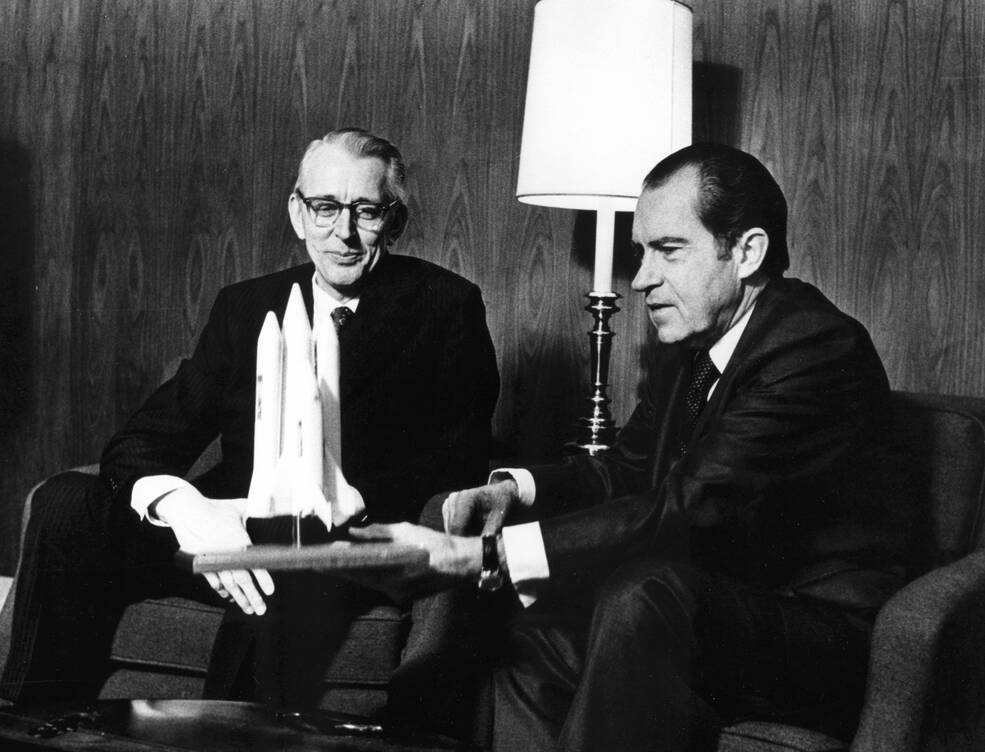
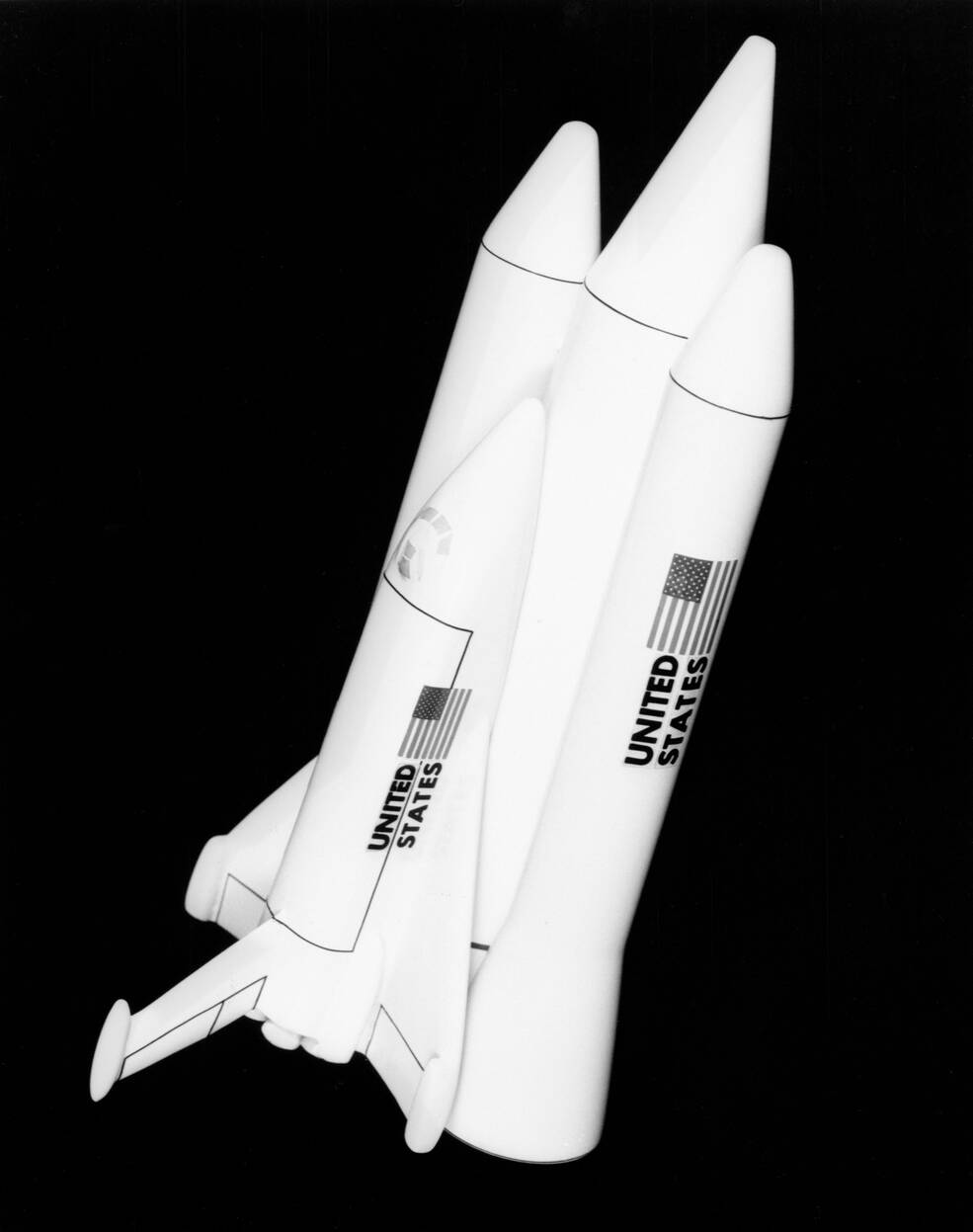
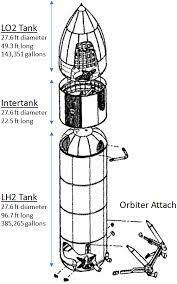
Left: In January 1972, NASA Administrator James C. Fletcher, left, and President Richard M. Nixon hold a model of the space shuttle as they announce the decision to build the new space transportation system. Middle: A close up of the model, showing the winged orbiter, the two side mounted booster rockets, and the central external tank. Right: Schematic diagram of the space shuttle External Tank.
The ET was NASA’s third major space shuttle program procurement, after the orbiter itself and the space shuttle main engines. The ET served as a fuel tank for the space shuttle, placed externally to reduce the weight and complexity of the orbiter itself. Its two tanks supplied liquid hydrogen and liquid oxygen to the orbiter’s three main engines just seconds from liftoff until right before orbital insertion. The orbiter then jettisoned the ET that burned up on reentry. The ET also served as the structural backbone of the space shuttle stack, with attach points for the two-side mounted Solid Rocket Boosters (SRBs) and the winged orbiter. On April 2, 1973, NASA released the Request for Proposals (RFP) to four companies – The Boeing Co., New Orleans; Chrysler Corp. Space Division, New Orleans; McDonnell Douglas Astronautics Co., Huntington Beach, California; and Martin Marietta Corp., Denver. On May 17, all four companies submitted proposals to NASA’s Marshall Space Flight Center (MSFC) in Huntsville, Alabama, the center responsible for overseeing the development and manufacture of the ET. On Aug. 16, NASA announced the selection of Martin Marietta to design, build, test, and deliver ETs for the space shuttle program. This initial cost-plus-award-fee contract covered six flight tanks and three ground test tanks, valued at $107 million, through 1978.
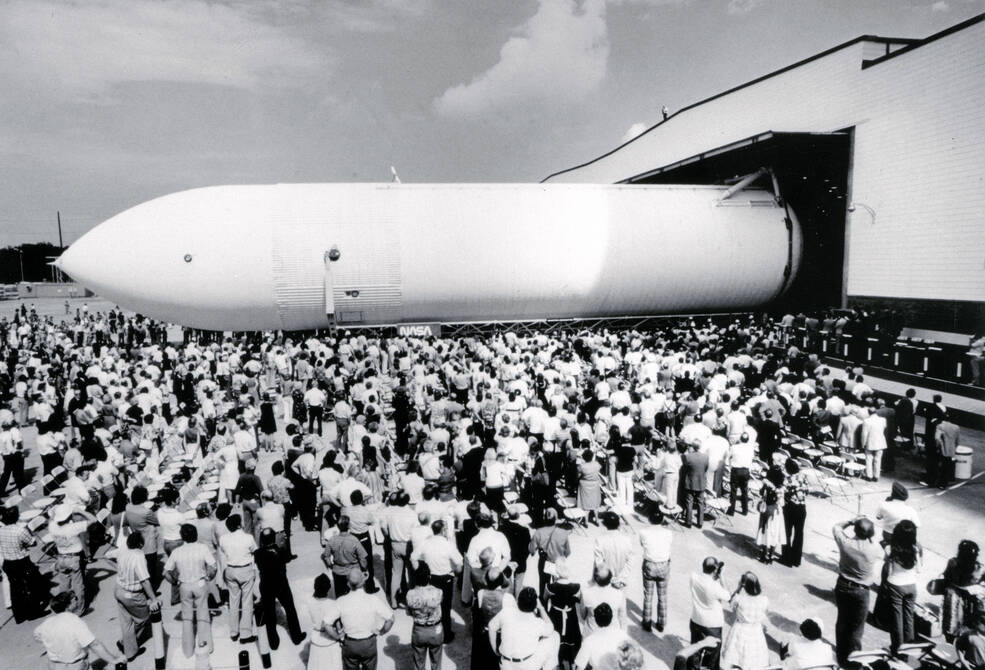
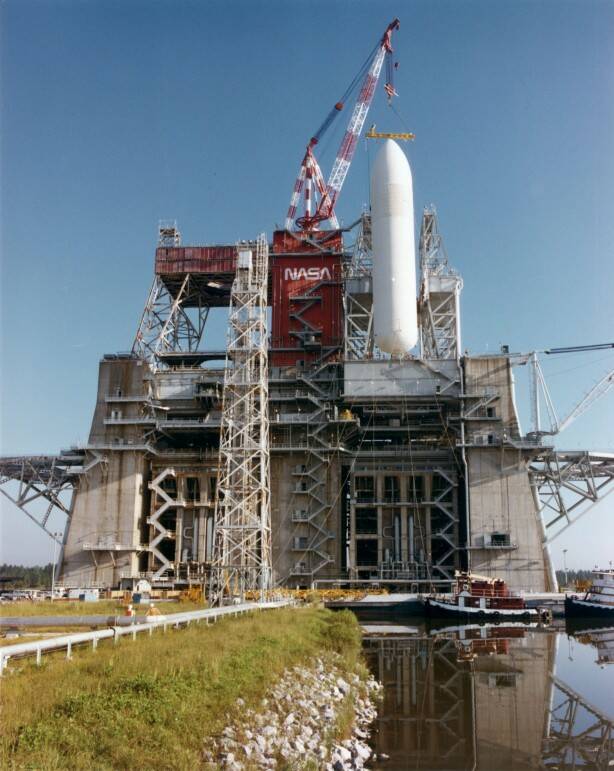
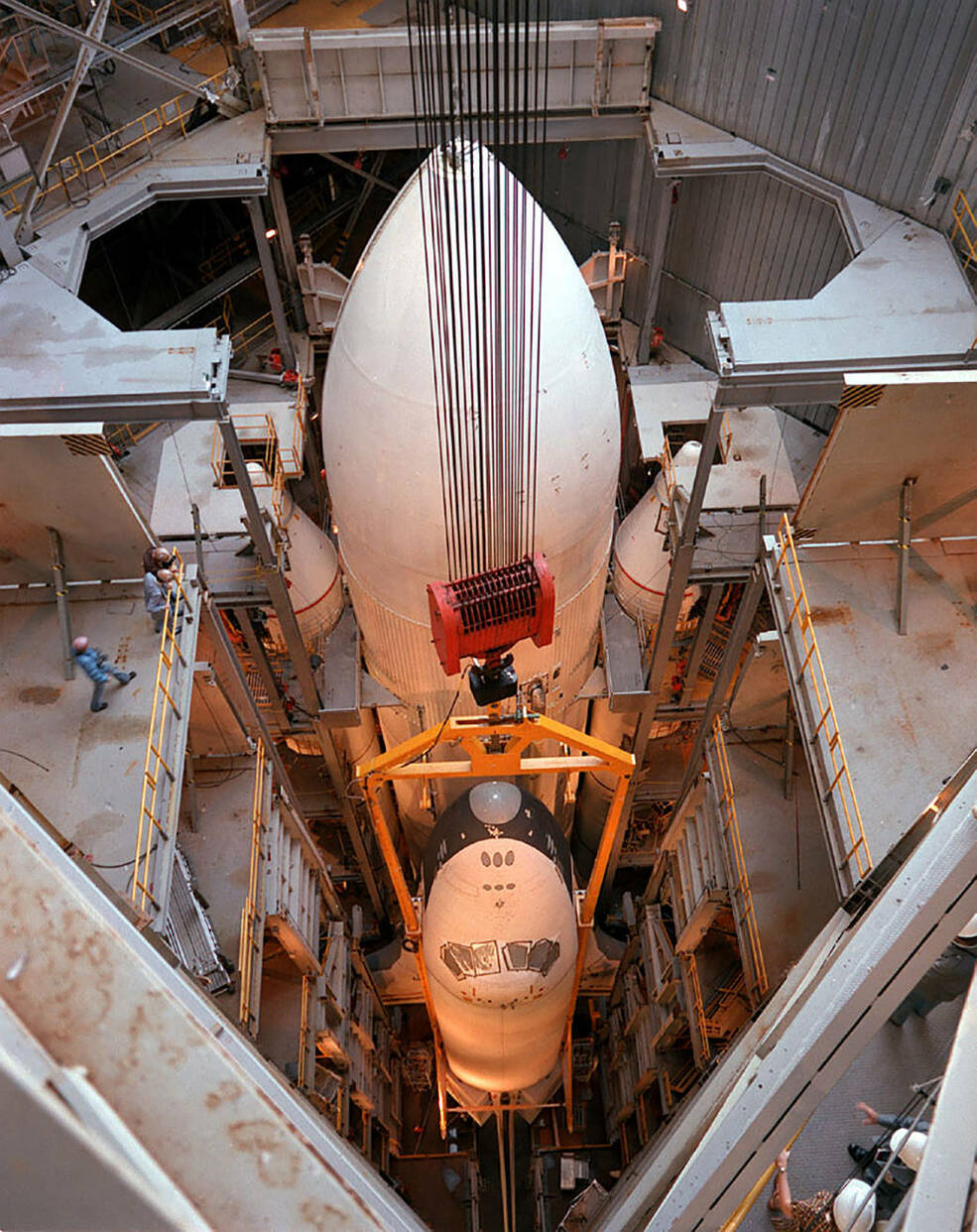
Left: The very first External Tank (ET-1) rolls out from the Michoud Assembly Facility in New Orleans on Sept. 9, 1977, a ground test article used as part of the Main Propulsion Test Article (MPTA). Middle: Workers lower the MPTA ET into a test stand at the National Space Transportation Laboratory, now NASA’s Stennis Space Center in Mississippi. Right: At NASA’s Marshall Space Flight Center in Huntsville, Alabama, the Ground Vibration Test Article ET mated with two solid rocket boosters and the orbiter Enterprise, the first occasion of a fully assembled space shuttle stack.
Martin Marietta rolled out the first ET from the Michoud Assembly Facility (MAF) in New Orleans on Sept. 9, 1977. This first tank, designated ET-1, did not help launch a shuttle but participated as the Main Propulsion Test Article (MPTA) ET in propulsion testing of space shuttle main engines at the National Space Transportation Laboratory (NSTL), now NASA’s Stennis Space Center in Mississippi. The MPTA resided at NSTL from April 1978 until February 1988, when it traveled by barge to Huntsville, Alabama, where today it forms part of a display at the U.S. Space and Rocket Center with a space shuttle orbiter mockup and two SRBs. The second non-flight unit, the Structural Test Article (STA), completed integrity testing of the ET’s main components at MSFC in 1978. The third non-flight ET, the Ground Vibration Test Article (GVTA), participated in vibration tests with space shuttle Enterprise and two inert SRBs at MSFC between April 1978 and February 1979, marking the first time engineers had assembled a complete space shuttle stack.
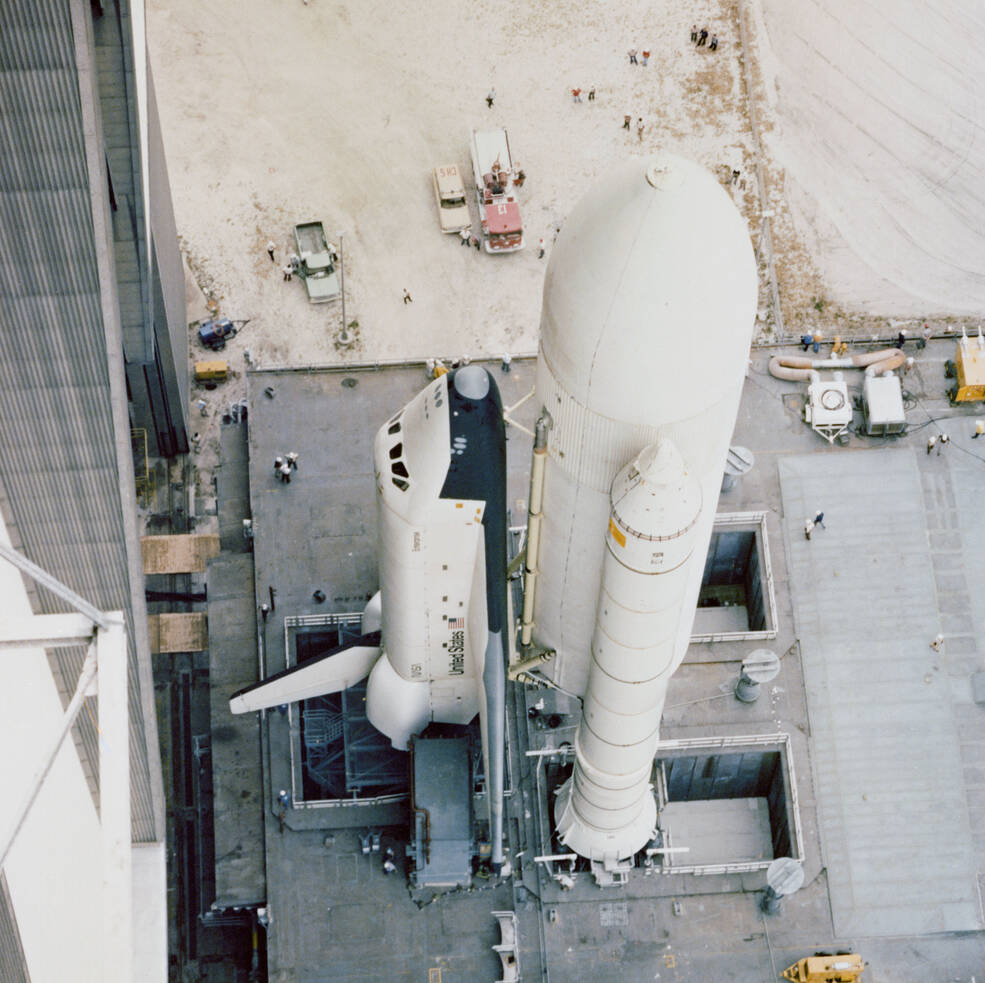
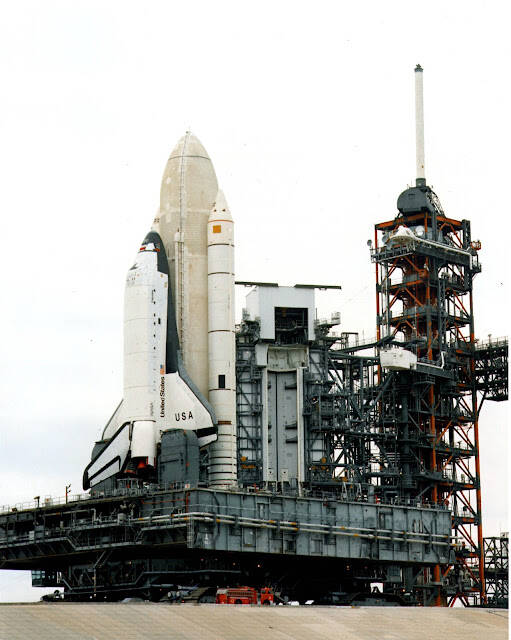
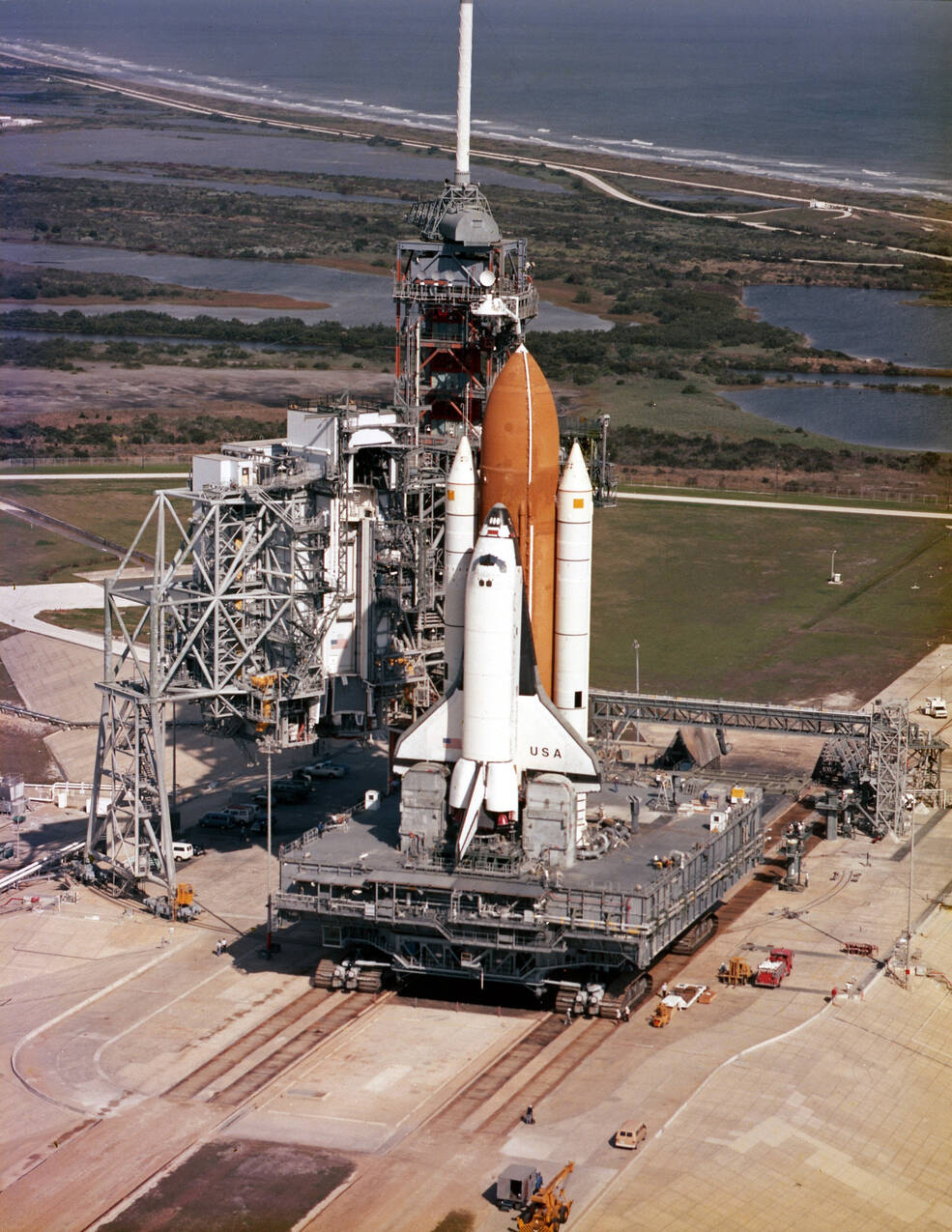
Left: Space shuttle Enterprise rolls out of the Vehicle Assembly Building at NASA’s Kennedy Space Center, attached to the Ground Vibration Test Article External Tank (ET). Middle: Space shuttle Columbia arrives at Launch Pad 39A for STS-1, attached to ET-2. Right: The rollout of STS-3 with ET-4, the first tank to sport an orange color.
After completing the vibration tests at MSFC, the GVTA traveled by barge to NASA’s Kennedy Space Center (KSC) in Florida where engineers used it as a Facilities Verification Vehicle (FVV). Mated to two SRBs and space shuttle Enterprise in the Vehicle Assembly Building (VAB), the FVV ET rolled out to Launch Pad 39A in May 1979 to perform fit and function tests, rolling back to the VAB in July. After disassembly of the stack, in August the ET traveled back to MAF where workers partially disassembled it. Kept in outdoor storage, a tornado heavily damaged it in February 2017. The first external tank (ET-2) destined for a space shuttle launch (STS-1) arrived at KSC after its 5-day barge trip from Michoud in July 1979. Due to delays in getting Columbia ready for its first flight, ET-2 waited until November 1980 before mating with the orbiter and SRBs. The complete stack rolled out to Launch Pad 39A in late December, with the first launch of an ET taking place on April 12, 1981. For the first two launches, workers painted the ET white to protect it from the Sun’s ultraviolet rays while the shuttle sat on the pad for possibly months at a time. Managers decided that with faster processing, the ET no longer required the white coating and starting with STS-3 (ET-4), workers no longer applied the white paint, leaving the tank the orange color of its spray-on insulation. The change reduced the tank’s weight by 600 pounds that added to the payload capacity of the shuttle.
Even prior to the first shuttle mission, NASA managers realized that to launch heavier payloads, the system’s performance required an upgrade. One way to accomplish this involved reducing the weight of the vehicle’s components. Using lighter materials, elimination of some stiffeners, and changes in the milling process to reduce metal thickness, these lightweight ETs weighed about 11,000 pounds less than the first six standard weight ETs. The first lightweight ET flew on STS-6, Challenger’s first mission in April 1983. Engineers achieved further weight savings by changing to a lighter alloy to fabricate the ETs. These super lightweight tanks weighed about 7,500 pounds less than the lightweight tanks. The first one flew on the STS-91 mission to Mir in June 1998 and on all flights requiring additional upmass capability such as those launching elements of the International Space Station. The ET required significant modification following the STS-107 Columbia accident on Feb. 1, 2003, caused by foam insulation and ice striking the orbiter’s left wing during ascent. The resultant damage allowed super-heated gases to enter the orbiter’s frame, causing it to disintegrate during atmospheric reentry. The changes included structural modifications to certain areas of the ET as well as enhanced processes to minimize loss of foam.

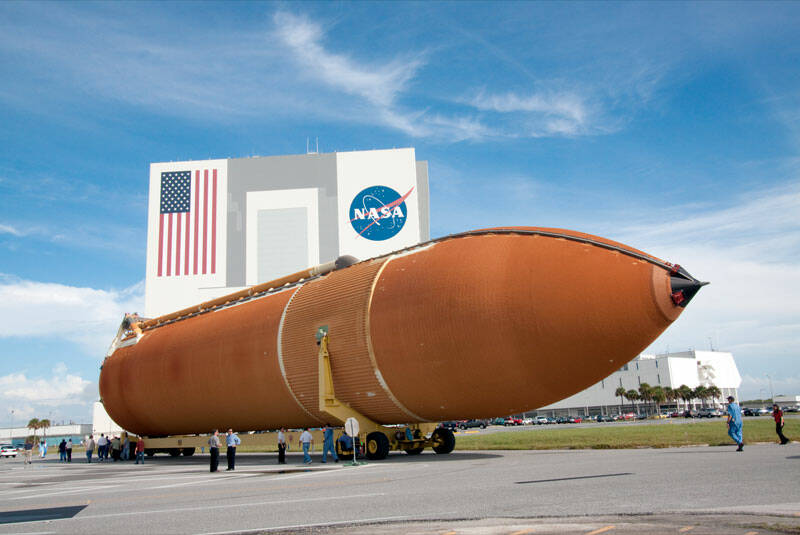

Left: The final space shuttle External Tank (ET) to fly, ET-138 rolls out of the Michoud Assembly Facility in New Orleans in July 2010. Middle: The final ET delivered to NASA, ET-122 arrives at NASA’s Kennedy Space Center in Florida in September 2010. Right: In March 2016, ET-94 crosses the 405 freeway in Los Angeles on its way to the California Science Center.
On July 8, 2010, the last ET to fly, ET-138, rolled off the assembly line at MAF, and flew on STS-135, the final mission of the program, in July 2011. On Sept. 28, 2010, ET-122, the 136th and final ET delivered for the program, arrived at KSC and flew on STS-134 in May 2011. ET-122 had suffered damage during Hurricane Katrina in August 2005, but workers repaired the damage to make it flight worthy. One ET, ET-94, remained at MAF after the end of the shuttle program. A lightweight tank delivered to NASA in 2001, it lost its mission, either a Spacehab science mission or another Hubble repair mission, following the Columbia accident. Used extensively in the accident investigation and to test tank modifications, ET-94 eventually found new life as part of an exhibit, alongside space shuttle Endeavour and two SRBs, at the California Science Center in Los Angeles, the only place visitors will be able to view a fully assembled space shuttle stack in launch orientation.
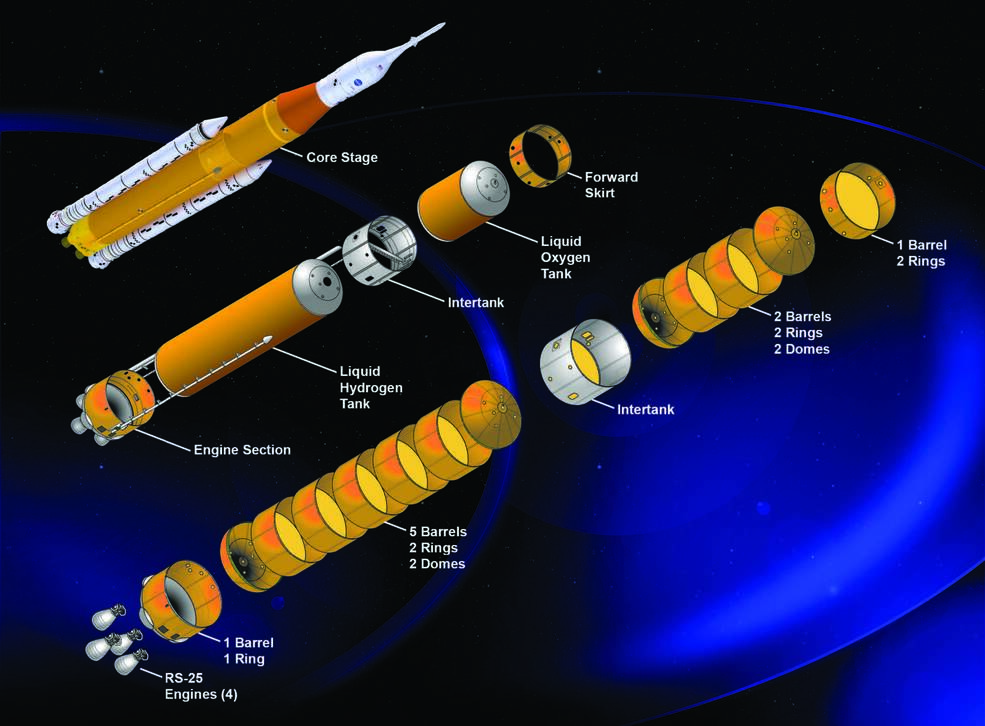
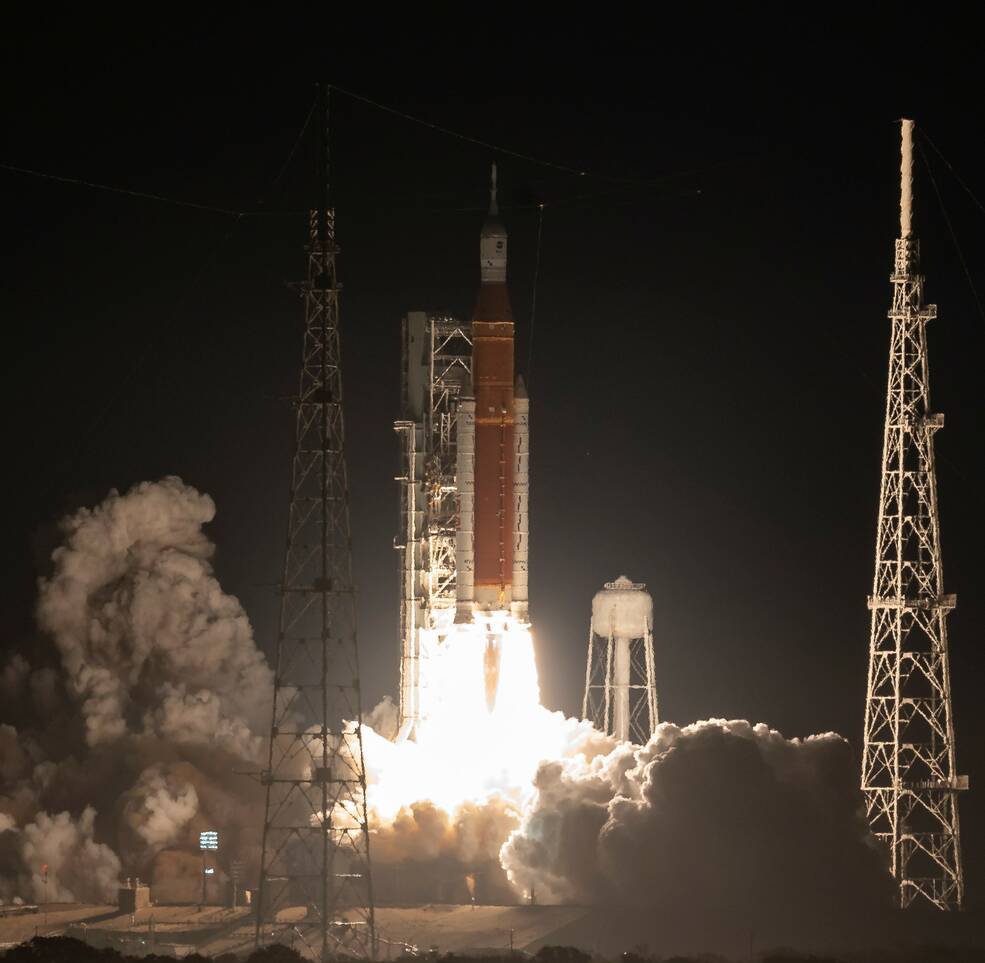
Left: Expanded view of the Space Launch System (SLS) core stage and its components. Right: Lift off of the first SLS rocket on the Artemis I uncrewed test mission in November 2022.
The Space Launch System (SLS) used to launch elements of NASA’s Artemis program to return humans to the Moon shares much heritage with space shuttle systems. The SLS core stage, built by the Boeing Co., at MAF has similarities to the shuttle ET, with the same overall diameter and tanks for liquid hydrogen and liquid oxygen that feed four shuttle RS-25 main engines mounted on the bottom of the stage. The core stage, like the ET, serves as the backbone of the vehicle, with two side mounted SRBs and the Orion spacecraft mounted on top.
John Uri
NASA Johnson Space Center





